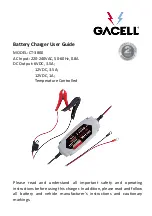
118
Wheels and tires
General information
Your vehicle is equipped with tires according
to the vehicles tire information placard on the
B-pillar (the structural member at the side of
the vehicle, at the rear of the drivers door
opening), or on the inside of the fuel filler door
on Canadian models.
The tires have good road holding characteris-
tics and offer good handling on dry and wet
surfaces. It should be noted however that the
tires have been developed to give these
features on snow/ice-free surfaces.
Certain models are equipped with all-season
tires, which provide a somewhat higher degree
of road holding on slippery surfaces than tires
without the all-season rating. However, for
optimum road holding on icy or snow-covered
roads, we recommend suitable winter tires on
all four wheels.
When replacing tires, be sure that the new tires
are the same size designation, type (radial) and
preferably from the same manufacturer, on all
four wheels. Otherwise there is a risk of
altering the cars roadholding and handling
characteristics.
Tread wear indicator
The tires have wear indicator strips running
across or parallel to the tread. The letters TWI
are printed on the side of the tire. When
approximately 1/16" (1.6 mm) is left on the
tread, these strips become visible and indicate
that the tire should be replaced. Tires with less
than 1/16" (1.6 mm) tread offer very poor
traction.
When replacing worn tires, it is recommended
that the tire be identical in type (radial) and
size as the one being replaced. Using a tire of
the same make (manufacturer) will prevent
alteration of the driving characteristics of the
vehicle.
New tires
Remember that tires are perishable goods. As
of 2000, the manufacturing week and year will
be indicated with 4 digits (e.g. 1502 means
that the tire illustrated was manufactured
during week 15 of 2002).
Storing wheels and tires
When storing complete wheels (tires mounted
on rims), they should be suspended off the
floor or placed on their sides on the floor.
Tires not mounted on rims should be stored on
their sides or standing upright, but should not
be suspended.
CAUTION!
Tires should preferably be stored in a cool,
dry, dark place, and should never be stored
in close proximity to solvents, gasoline, oils,
etc.
WARNING!
• The wheel and tire sizes for your Volvo
are specified to meet stringent stability
and handling requirements. Unapproved
wheel/tire size combinations can negative-
ly affect your vehicle's stability and
handling. Approved tire sizes are shown
in the Tire inflation pressure tables on
page 122.
• Any damage caused by installation of
unapproved wheel/tire size combinations
will not be covered by your new vehicle
warranty. Volvo assumes no responsibility
for death, injury, or expenses that may
result from such installations.
Tread wear indicator
Summary of Contents for 2006 XC70
Page 1: ...2006 ...
Page 4: ......
Page 8: ......
Page 54: ...46 ...
Page 86: ...78 ...
Page 142: ...134 ...
Page 182: ...174 ...
Page 208: ...200 ...
Page 209: ...201 ...
Page 210: ...202 ...
















































